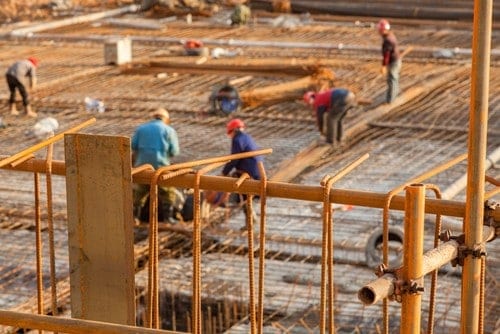Construction Defect is a two-word phrase that has taken on a life of its own over the past 20 years. To be clear, construction defect claims have existed ever since construction projects began, but the construction boom of the 1990’s dramatically increased the amount of construction defect claims that made their way into the courts. So what is construction defect and why all the fuss?
The phrase “construction defect” is easily understood on its face – some type of faulty or defective work occurred during construction and led to damages. The key question is who will pay for the damages – the contractor’s insurance company or the contractor? Unfortunately there’s no easy or consistent answer from state to state, and the circumstances are constantly changing.
Three questions are key to determining whether a particular construction defect claim will be covered under standard commercial insurance policies (Commercial General Liability and Commercial Umbrella):
- Is the construction defect an “occurrence”?
- Did “property damage” result from the construction defect?
- Is the “property damage” excluded by one of the business risk exclusions?
Although many other questions are pertinent to coverage, these three are critical for construction defect claims.
The primary question is whether the construction defect qualifies as an “occurrence.” This is paramount because without an “occurrence,” the policy will not respond. The policy provides coverage for “property damage” caused by an “occurrence.” The term “occurrence” is typically defined as “an accident, including continuous or repeated exposure to substantially the same general harmful conditions.” Stated another way, the primary question is whether the faulty work was an accident. Unfortunately, the word “accident” is not typically defined.
The problem is states across the country have split on whether they view construction defect as an “occurrence.” If construction defect is considered an “occurrence” and there is resulting “property damage,” then the policy is triggered and the facts of the claim are scrutinized against the policy to see if coverage exists. On the other hand, if construction defect is not considered an “occurrence,” then the policy is not triggered and no coverage is possible under the policy. The recent judicial and legislative trend is to treat construction defect as an “occurrence.” That doesn’t guarantee coverage, but it at least triggers the insuring agreement in the policy, opening the door to claim consideration.
The second critical coverage question centers on whether “property damage” resulted from the construction defect. The majority view is coverage exists where defective work causes damage to property other than the contractor’s work. For example, a defective roof caused by the faulty work of a roofing subcontractor was not covered under a Florida CGL policy where there was no other damage to the building or contents resulting from the defective roof. The rationale for this majority view is the contractor should not be covered for its own substandard work. If, however, the roof work resulted in a leak that caused water damage to the building floor, the floor would likely be covered, assuming all other policy terms and conditions were met. There are many other variations of this “property damage” question, but they’re beyond the purpose of this article.
Assuming a construction defect claim involves “property damage” caused by an “occurrence,” the remaining primary question is whether any the various business risk exclusions in the policy exclude coverage. The business risk exclusions are based on the idea that commercial liability insurance shouldn’t cover damages caused by an insured’s substandard work or product. The quality of an insured’s work or product is best controlled by the insured, not the insurer. We touched on this in the previous example of the roofing contractor.
For purposes of this article, we’ll focus solely on the “your work” exclusion, a business risk exclusion often applied to construction contractors. This exclusion excludes coverage for the cost to repair or replace the contractor’s own defective work. Wait a minute, you might be thinking. If contractors want construction defect “property damage” to be considered an “occurrence” and therefore trigger the policy, what good is it if they are not covered by the policy for their own faulty work? The answer lies in an exception to the “your work” exclusion. The exception recognizes coverage for a contractor’s defective work if the work was performed on the contractor’s behalf by a subcontractor. The rationale for this subcontractor exception is a contractor can control its own performance, but cannot necessarily control a subcontractor’s performance.
So let’s sum up. A contractor may be covered by the policy for defective work if the work was performed by its subcontractor – but there first must be “property damage” and that “property damage” must be caused by an “occurrence.” And the policy will be triggered only if a state considers construction defect to be an “occurrence.” Thus, the initial question – whether a state considers construction defect to be an “occurrence” – has major implications for contractor policyholders, insurers, agents, and courts.
The large number of construction defect claims over the last 15 years and the disparity in state laws and court decisions regarding the three coverage questions outlined above are the main reasons you keep hearing about construction defect. State legislatures have attempted to clarify or correct judicial decisions but the laws still differ from state to state. Varying factual scenarios and nuances in the laws and court decisions further exacerbate uncertainty about insurance coverage for these claims.
Is construction defect damage covered by commercial liability insurance? It depends. Many variables are involved. Although significant progress has been made in the last decade and a half to clarify the answer from state to state, there is still no certainty. The only certainty is the construction defect landscape is still changing.
Now you know what all the fuss is about.


